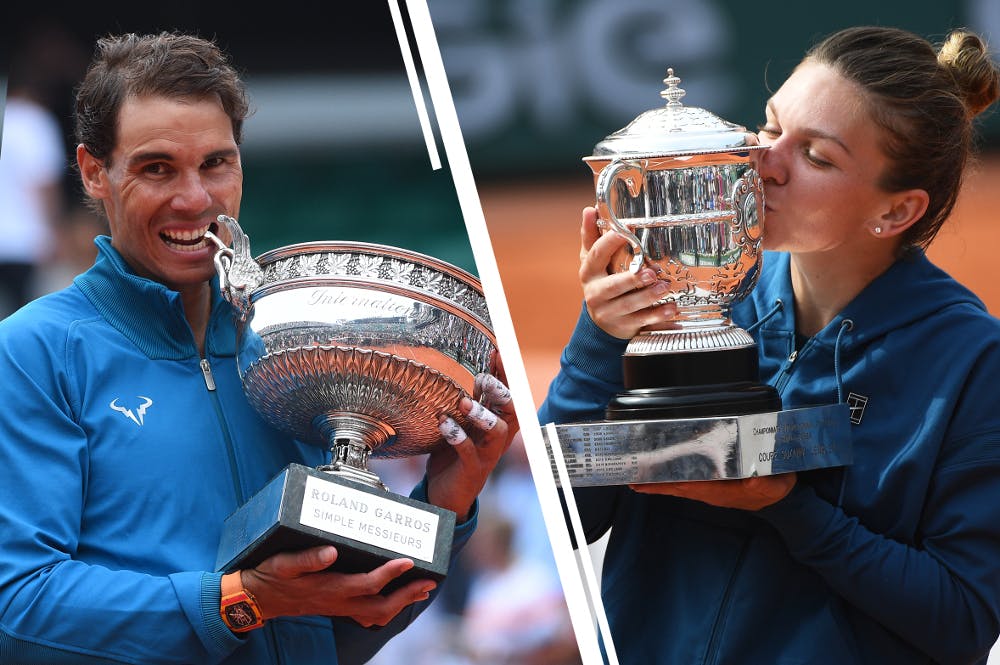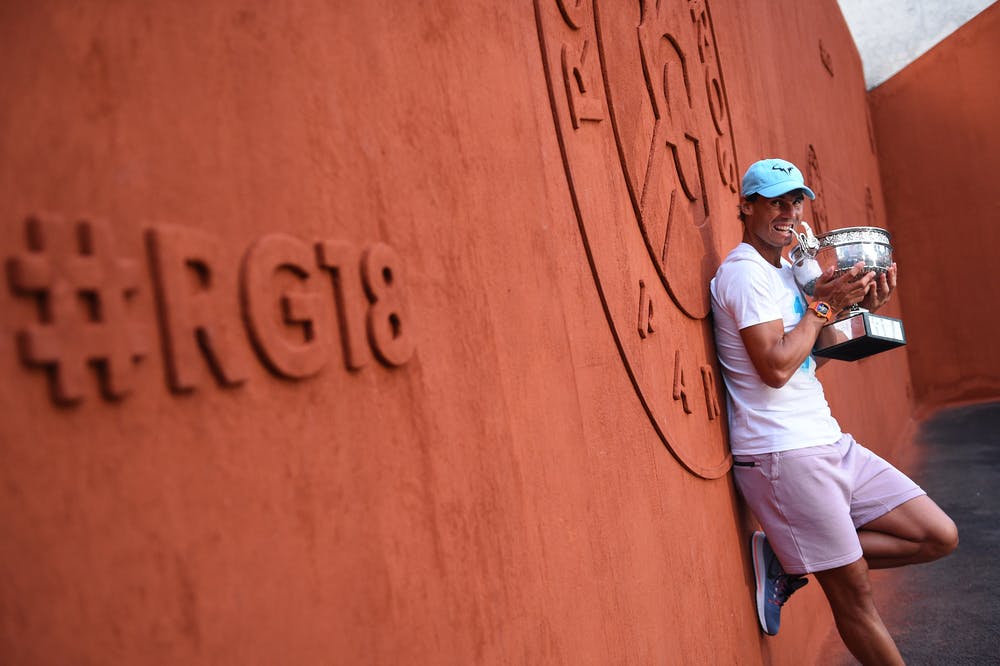50 years of Open Era tennis has witnessed a plethora of changes in technology, fashion and playing styles, but the transition from clay to grass remains one of the toughest tasks to tackle in tennis….
“Channel Slam” for Rafa and Simona?
The transition from clay to grass remains one of the toughest tasks to tackle in tennis.

The challenge is 14 Grand Slam victories within the space of seven weeks.
Well, it’s for those with the astonishing ability to make the transition from the clay courts at Roland Garros to the luscious green lawns at Wimbledon look seamless.
Roland Garros champions Rafael Nadal and Simona Halep find themselves within grasp of this prestigious double.
Scanning through the record books and only 10 players in the Open Era, since 1968, have accomplished the double in Paris-London.
The ‘Rocket’ Rod Laver was the first to clinch the ‘Channel Slam’ back in 1969– ousting compatriots Ken Rosewall and then John Newcombe in the trophy showdowns.
Since then, only three other men have enjoyed Major triumphs on clay and grass in the same year.

Bjorn Borg evidently thrived building patterns in the Roll of Honour, hence taking home the top prize in Paris and London in three successive seasons from 1978-1980.
Fast forward to 2008 and Nadal relinquished just four games to dismantle Roger Federer at Roland Garros, weeks ahead of their scintillating final five-set thriller at SW19. Inbetween Nadal’s 2008 and 2010 ‘Channel Slams,’ Federer also joined his fiercest rival on the list.
Over to the women’s side and Margaret Court secured the double as part of a 1970 ‘Calendar Slam’. Billie Jean King (1972) and Chris Evert (1974) demonstrated their versatility to join the exclusive club, before Martina Navratilova usurped them with a ‘Channel Slam’ in 1982 and 1984.
22-time Grand Slam champion Steffi Graf illustrated her dominance, thrashing Natasha Zvereva 6-0 6-0 in 1988 to spark the first of four French Open-Wimbledon duopolies (1988, 1993, 1995, 1996).
Finally, a perennial record breaker, Serena Williams has exemplified her longevity with the ‘Channel Slam’ in 2002 – navigating past sister Venus in both finals - and then repeating such success in 2015.
These 10 legends of the sport clearly didn’t find the physicality of changing surfaces too demanding.
The body has to adapt from sliding into shots on the red dirt to encounter a much lower, zipping ball on the green turf. In a unique tangent of the Tours, players get just four to five weeks to find their feet on the grass.
Gone are the days of ‘clay specialists’ skipping the grass campaign. In fact, in 2015 Wimbledon eased the scheduling conundrum by edging back a week in the calendar.
Adjusting games to thrive on clay then grass has always been an arduous battle of stamina and versatility, as put by Nadal.
''The tough thing today is mentally and physically you play a long clay-court season. Not only the clay-court season. You are coming from an American hard-court season,” stated the world No.1. “So one month in America, then one month and a half in Europe, playing on clay. Then mentally if you are able to win Roland Garros, you already played a lot of time at your top, mentally and physically.''
Basically, Rafa recalls the unique triumph as draining. ''But the best players are able to do it very well, the transition,'' declared the 32-year-old.
The Spaniard has been there and done it – sliding to silverware on Court Philippe-Chatrier, before implementing his relentless game on balls on a completely different trajectory. The main area of contention is whether Nadal has fully recovered from his gruelling clay campaign.
Meanwhile, for fellow Roland-Garros ruler Halep, the Romanian is yet to rule in south west London.
The women’s world No.1 will be eager to improve on her solitary semi-final showing back in 2014. Consecutive Wimbledon quarter-finals in the past two years prove Halep isn’t too far off a title tilt at SW19.
Halep spoke of her relief at finally claiming a Major title in Paris, admitting “I felt 'it's gone, it's not going to happen again,’ revealed the 26-year-old earlier this month after dispatching Sloane Stephens in a fourth Grand Slam final.
A weight has been lifted off the shoulders of Halep and her full all-court repertoire is set to become even more potent playing with a sense of freedom.
Both Nadal and Halep were so exhausted by their exploits in Paris that neither player featured in a build-up event for Wimbledon. Compare that to Roland-Garros, the duo duelled on the clay in seven events between them.
That proves the gravitas of the task to excel on clay and then grass. Nadal and Halep wanted as much time possible to rest, to recuperate and prepare the body for the stark contrast in movement.
It is one of the most arduous tennis tests but Nadal and Halep – refreshed, sitting top of their respective rankings, possessing dogged determination and with questions marks surrounding many of their rivals – could feasibly replicate their Roland-Garros trophy lift.
 ROLAND-GARROS
18 May - 7 June 2026
ROLAND-GARROS
18 May - 7 June 2026

